Ch 5 Computer Safety and Security
advertisement
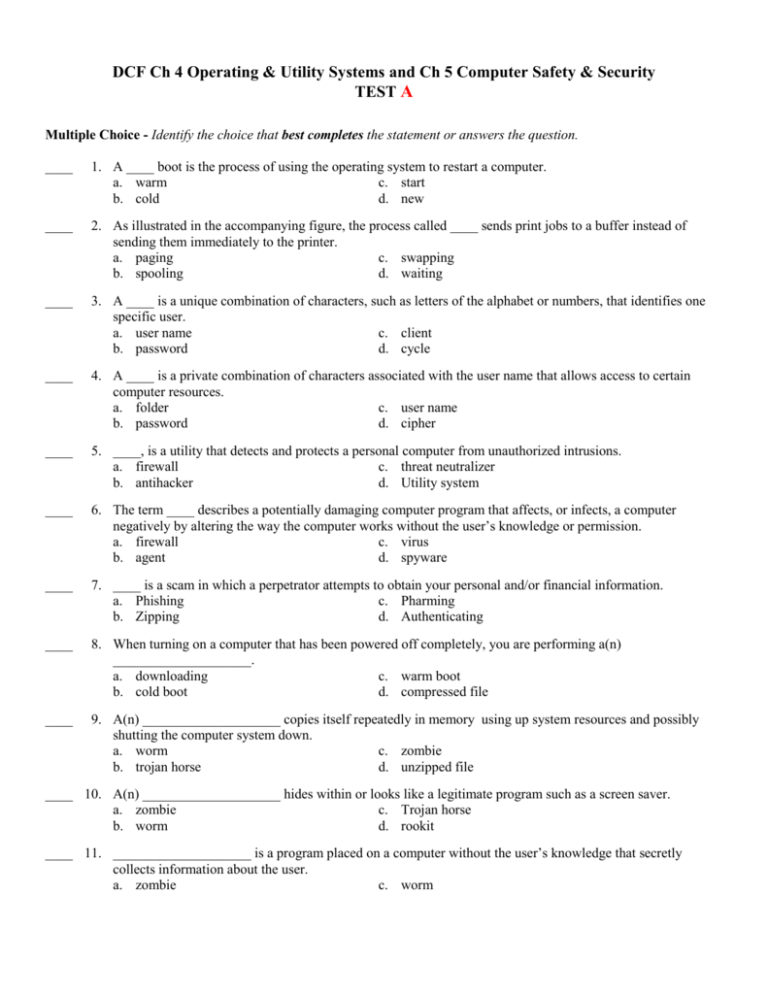
DCF Ch 4 Operating & Utility Systems and Ch 5 Computer Safety & Security TEST A Multiple Choice - Identify the choice that best completes the statement or answers the question. ____ 1. A ____ boot is the process of using the operating system to restart a computer. a. warm c. start b. cold d. new ____ 2. As illustrated in the accompanying figure, the process called ____ sends print jobs to a buffer instead of sending them immediately to the printer. a. paging c. swapping b. spooling d. waiting ____ 3. A ____ is a unique combination of characters, such as letters of the alphabet or numbers, that identifies one specific user. a. user name c. client b. password d. cycle ____ 4. A ____ is a private combination of characters associated with the user name that allows access to certain computer resources. a. folder c. user name b. password d. cipher ____ 5. ____, is a utility that detects and protects a personal computer from unauthorized intrusions. a. firewall c. threat neutralizer b. antihacker d. Utility system ____ 6. The term ____ describes a potentially damaging computer program that affects, or infects, a computer negatively by altering the way the computer works without the user’s knowledge or permission. a. firewall c. virus b. agent d. spyware ____ 7. ____ is a scam in which a perpetrator attempts to obtain your personal and/or financial information. a. Phishing c. Pharming b. Zipping d. Authenticating ____ 8. When turning on a computer that has been powered off completely, you are performing a(n) ____________________. a. downloading c. warm boot b. cold boot d. compressed file ____ 9. A(n) ____________________ copies itself repeatedly in memory using up system resources and possibly shutting the computer system down. a. worm c. zombie b. trojan horse d. unzipped file ____ 10. A(n) ____________________ hides within or looks like a legitimate program such as a screen saver. a. zombie c. Trojan horse b. worm d. rookit ____ 11. ____________________ is a program placed on a computer without the user’s knowledge that secretly collects information about the user. a. zombie c. worm b. spyware d. spam Ch 5 Computer Safety and Security Multiple Choice - Identify the choice that best completes the statement or answers the question. ____ 12. A computer ____ risk is any event or action that could cause a loss of or damage to computer hardware, software, data, information, or processing capability. a. security c. terrorism b. liability d. network ____ 13. Any illegal act involving a computer generally is referred to as a ____. a. cyberthreat c. malware b. computer crime d. hoax ____ 14. The term ____ refers to online or Internet-based illegal acts. a. malware c. cybercrime b. cyberthreat d. cyberextortion ____ 15. A ____ has the same intent as a cracker but does not have the technical skills and knowledge. a. hacker c. cyberextortionist b. script kiddie d. cyberterrorist ____ 16. A ____ is someone who uses e-mail as a vehicle for extortion. a. hacker c. cyberextortionist b. script kiddie d. cyberterrorist ____ 17. A ____ is someone who uses the Internet or network to destroy or damage computers for political reasons. a. hacker c. cyberextortionist b. script kiddie d. cyberterrorist ____ 18. ____ protects a computer against viruses by identifying and removing any computer viruses found in memory, on storage media, or on incoming files. a. An anti-spam program c. An antivirus program b. E-mail encryption d. E-mail filtering ____ 19. ____ is a technique intruders use to make their network or Internet transmission appear legitimate to a victim computer or network. a. Rebuking c. Transmitting b. Spoofing d. Victimizing ____ 20. As shown in the accompanying figure, many Web sites require a user to enter a ____, which is a private combination of characters associated with a user name that allows access to certain computer resources. a. PIN c. secure key b. password d. passterm ____ 21. ____ theft is the act of stealing computer equipment. a. Hardware c. SMS b. Cyber d. Software ____ 22. ____ occurs when someone steals personal or confidential information. a. Plagiarism c. Information theft b. Decryption d. Cyberpiracy ____ 23. ____ can lead to system failure. a. b. c. d. Aging hardware Natural disasters, such as fires, floods, or hurricanes Errors in computer programs All of the above ____ 24. Computer ____ are the moral guidelines that govern the use of computers and information systems. a. logistics c. ethics b. mechanics d. rights ____ 25. As shown in the accompanying figure, an unsolicited e-mail message or newsgroup posting sent to multiple recipients or newsgroups at once is called ____. a. spyware c. cookies b. spam d. adware ____ 26. As related to the use of computers, ____ is defined as gaining unauthorized access or obtaining confidential information by taking advantage of the trusting human nature of some victims and the naivety of others. a. DoS c. DRM b. social engineering d. scamming True/False Indicate whether the statement is true or false. ____ 27. Hackers use computer automated tools to assist them with guessing passwords. ____ 28. In most cases locking doors and windows are adequate to protect computer equipment from hardware theft. ____ 29. A cookie is a small text file that a Web server stores on a computer. ____ 30. Spam is a program placed on a computer without the user’s knowledge that secretly collects information about the user. ____ 31. Encrypted data is ussed to preven unauthorized access to computer systems. ____ 32. A rootkit is someone who accesses a computer or network illegally but has the intent of destroying data, stealing information, or other malicious action. ____ 33. A backdoor is a program or set of instructions in a program that allow users to bypass security controls when accessing a program, computer, or network. ____ 34. A cyberextortionist is someone who uses the Internet or a network to destroy or damage computers for political reasons. ____ 35. Digital forensics collection & analysis of evidence found on computers & networks
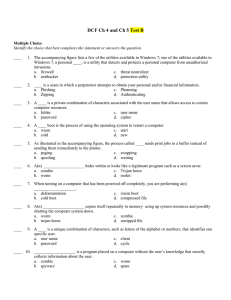
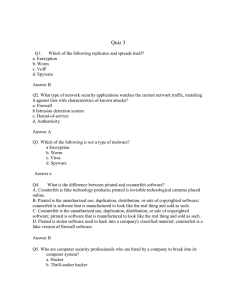
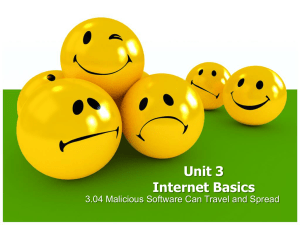

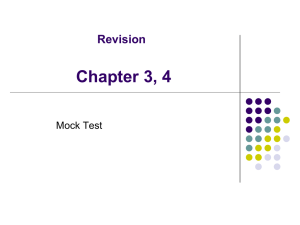



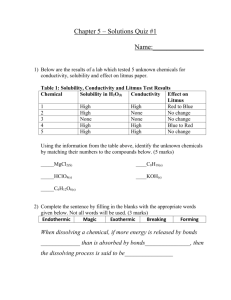

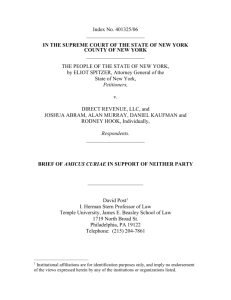
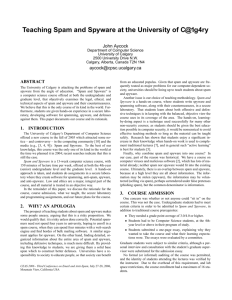
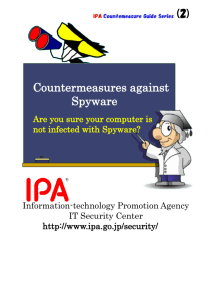
![[edit] Virus - TeacherTube](http://s3.studylib.net/store/data/007023917_1-2d136276c811aebf4166e157dfcb1c6a-300x300.png)